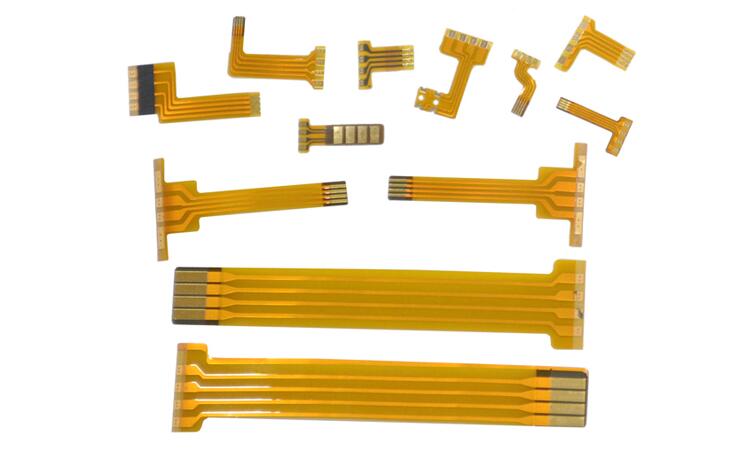FPC is the abbreviation of Flexible Printed Circuit, also known as a flexible circuit board, flexible printed circuit board, or flexible circuit board, abbreviated as soft board or FPC, which has the characteristics of high wiring density, lightweight and thin thickness. Mainly used in mobile phones, notebook computers, PDAs, digital cameras, LCMs and many other products.
Classification of FPC
According to the combination of base material and copper foil, flexible circuit boards can be divided into two types: flexible boards with glue and flexible boards without glue.
Among them, the price of the glueless flexible board is much higher than that of the glued flexible board, but its flexibility, the bonding force of the copper foil and the substrate, and the flatness of the pad are also better than the glued flexible board. Therefore, it is generally only used for high-demand occasions, such as COF (CHIP ON FLEX, bare chip mounted on flexible board, high requirements for flatness of the pad) and so on.
Due to its high price, most of the flexible boards currently used in the market are still flexible boards with glue.
FPC with glue. Since the flexible board is mainly used in occasions that need to be bent, if the design or process is unreasonable, defects such as micro-cracks and open welding are likely to occur. The following is about the structure of the flexible circuit board and its special requirements in design and technology.

The structure of FPC flexible
According to the number of layers of conductive copper foil, it is divided into single-layer boards, double-layer boards, multi-layer boards, and double-sided boards.
Single-layer board structure: The flexible board of this structure is the simplest flexible board. Usually the base material + transparent glue + copper foil is a set of purchased raw materials, and the protective film + transparent glue is another purchased raw material. First, the copper foil needs to be etched and other processes to obtain the required circuit, and the protective film needs to be drilled to expose the corresponding pads. After cleaning, use the rolling method to combine the two. Then the exposed pad part is electroplated with gold or tin for protection. In this way, the slab is ready. Generally, small circuit boards of corresponding shapes are also stamped.
There are also solder masks directly printed on the copper foil without a protective film so that the cost will be lower, but the mechanical strength of the circuit board will be worse. Unless the strength requirements are not high but the price needs to be as low as possible, it is best to apply a protective film method.
Double-layer board structure: When the circuit is too complicated, the single-layer PCB board cannot be wired, or copper foil is needed for grounding shielding, double-layer PCB board or even multi-layer PCB board is required.
The most typical difference between a multi-layer board and a single-layer board is the addition of a via structure to connect each layer of copper foil. The first processing technology of available substrate + transparent glue + copper foil is to make vias. First drill holes on the substrate and copper foil, and then plate a certain thickness of copper after cleaning, and the vias are completed. The subsequent production process is almost the same as the single-layer board.
Double-sided PCB board structure: There are pads on both sides of the double-sided board, which are mainly used for connection with other circuit boards. Although it is similar to the single-layer PCB board structure, the manufacturing process is very different. Its raw material is copper foil, protective film + transparent glue. First, drill holes on the protective film according to the requirements of the pad position, and then attach the copper foil to corrode the pads and leads, and then attach another protective film with drilled holes.
FPC product features
1. It can be freely bent, folded, and wound, and can be moved and stretched freely in three-dimensional space.
2. The heat dissipation performance is good, and the FPC can reduce the volume.
3. Realize lightweight, miniaturization, and thinning, so as to achieve the integration of component devices and wire connections.
FPC is a highly reliable and excellent flexible printed circuit made of polyimide or polyester film as the base material.